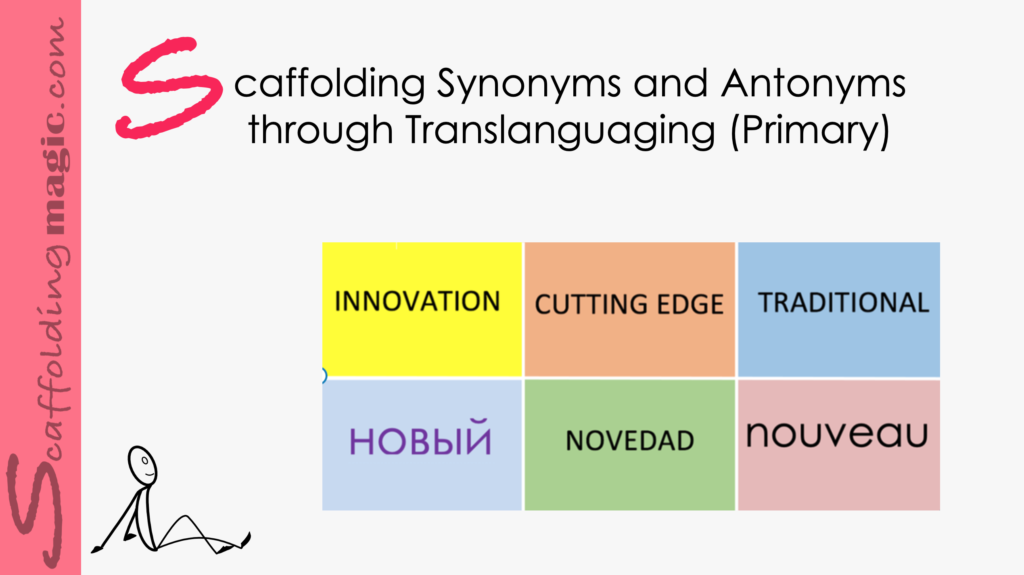You caught a beauty!!!
Download PDF of scaffold here.
theory behind scaffold…
You’re a language teacher and this is one of those times that you are going to forget all that talk about learning language through content. NO! You are going to give your students a list of synonyms and antonyms to learn and that’s THAT!!
Well, alright. But at least let’s make it dynamic, and at least let’s add critical thinking, and at least let’s plan it a little differently so that we can catagorise it as the effective language learning technique: translanguaging.
Translanguaging is the thoughtful use of more than one language for learning in one lesson’. More specifically, translanguaging involves speaking, listening, reading and/or writing about a topic on one language, and then speaking or writing about it in another. In translanguaging, both languages are used in an integrated and coherent way to organise and mediate learning.*
An important factor in translanguaging is knowing the different registers – when to use different tones, words, phrases. It’s important to know which terms are appropriate for specific circumstances. E…………………………………………………………….. being comfortable with – or at least recognising – register is of the highest importance.
All this can be included in what might at first seem like a simple language lesson to learn synonyms and antonyms – building a firm lexical foundation.
This scaffold will help not only introduce and refine academic language, but also – for those students learning in plurilinguistic environments – it will also support and honour code switching.
step by step:
- Make a list of 15-20 terms you’d like your students to learn from the next lesson, unit, project, video, podcast, etc. you’ll be interacting with.
- In a column next to that list, write a ……… either one word or a phrasal verb.
- In a third column………………………………………….m.
- Decide on one, two or three languages that your students are learning and……………………………………languages. (See example below.)

- Print each column on small separate pieces of paper.
6. …………………………………………. (See example of one term on the right printed on different coloured pieces of paper.)

- Without explaining anything to the students except that they are to work together to ……………………………. a set of the coloured cards.
- Students work together to e……………………. clearly defend what they’ve concluded.
- Groups share the way they’ve …………………………..
- You show them how you did it, stressing that it is neither correct nor incorrect, it’s just one more way to order the words you’ve presented.
- Formative Assessment: Show words one by one from any column, and groups take turns f……………………………. and/or the way they have.
- Reflection: Students write…………………………………………………..of their own invention.

Sites With Synonyms And Antonyms:
Synonyms and Antonyms for philosophical-theory
Power Thesaurus
How to use synonyms to improve writing


Scaffoldingmagic.com is your entryway into DYNAMIC bilingual learning methodologies, such as Phenomenon-Based Learning, CLIL, EMI, and ESL. You’ll find ways to implement critical thinking tools (DOK) to promote higher level thinking, the growth mindset, instill an ethic of excellence, deep reflection on learning, and all through multi-cultural, interdisciplinary activities. We have the keys to turning competences into action and to creating collective efficacy in your school so you move ahead as a unified, enthusiastic team.



